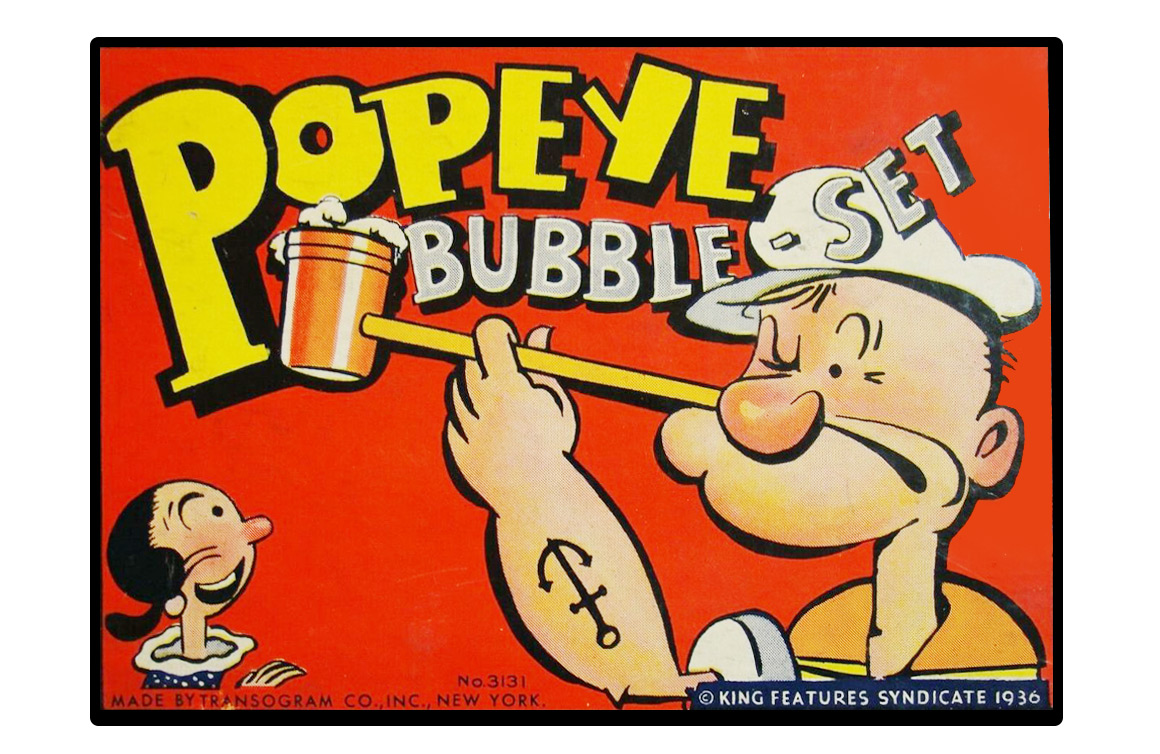Released by Transogram in 1936, the Popeye Bubble Set capitalized on Popeye’s popularity while offering children the thrill of blowing soap bubbles through a sailor’s pipe.
The character of Popeye first appeared in the 1929 Thimble Theatre comic strip published by King Features. Popeye was developed with many instantly recognizable characteristics, including his strong chin, muscular physique, and love of spinach. As well, his ever-present pipe would become a key prop in the comics and cartoons. Popeye used the pipe to smoke tobacco in his earlier appearances and later used it to guzzle spinach and as a propulsion system, a periscope, a whistle, and more.
As Popeye grew in popularity, his likeness was used in many different forms of entertainment media, including toys and games.
The Popeye Bubble Set leveraged people’s love of the character and his pipe with another pop-culture mainstay, soap bubbles. Blowing soap bubbles has been part of childhood for centuries — the activity is depicted as early as in a 1630 painting from Dutch artist Adriaen Hanneman, titled Two Boys Blowing Bubbles. The devices used to blow bubbles have evolved to include straws, pipes, wands, plastic toy guns, spinning electronic bubble blowers, and others.
IN THE BOX
The Popeye Bubble Set came with two wooden pipes, a soap tray, two packages of bubble flakes, and a hand soap in the shape of Popeye’s face. Variations of the toy offered updates to the design of the soap tray and later an additional tray.
ABOUT TRANSOGRAM
Manhattan-based Transogram produced many memorable toys and games in its day (915 to 1971), including Mandrake the Magician Magic Kit (1949), Wink Tennis (1956), The Aquanauts Game (1961) Yogi Bear Ball Toss (1965), Swing Wing (1965), Green Ghost (1965), and Pretzel-Jetzel (1965).
Note: If you buy something using the eBay link in this story, we may earn a small commission. Thank you for supporting independent toy journalism!


